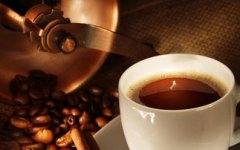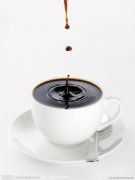Coffee Culture in Shanghai the Development of Coffee Culture in China
Coffee is an imported product. In the early years, coffee was translated into a variety of names, and there was even a translation of "getting fat".

With the opening of Shanghai, coffee sprang up in the concession. Many fashionable Shanghainese also go to taste fresh, often complaining bitterness and shouting "unexpectedly as bad as cough potion". However, with the popularity of western food in Shanghai, coffee is gradually accepted by most people. There are already poems about coffee in Zhu Wenbing's ci on the Sea (1909). At the beginning of the Republic of China, Zhou Lianjuan, a member of the Mandarin Butterfly School, "sipped bitterness and added evil, absolutely seemed to be lovesickness", which linked coffee with traditional images in Chinese literature, such as lovesickness, sorrow, sorrow, and so on.
Cafes appeared later in Shanghai. At first, many western restaurants in the Anglo-French concession served as cafes and tasted good coffee as well. Cafes sprang up in Shanghai like bamboo shoots after a spring rain, probably in the late 1920s and early 1930s. At first, the cafe was mainly set up to adapt to the leisure and gathering of aliens, and then gradually became a way of life for some citizens in Shanghai.
People like to go to cafes, on the one hand, as imported goods, they are very "foreign-style" in architectural decoration and drinking style, and they are a place to experience the western way of life, on the other hand, cafes also adapt to the characteristics of Shanghai. Soon, the coffee shop in Shanghai was no longer a place to drink coffee, but became a "public space" in the modern city. Lovers went to the coffee shop to date, and literary young people wrote in the coffee shop. At that time, many new literary writers wrote about the coffee shop in Shanghai. For example, Lin Huiyin's "Lady of the Flower Shop" and Wen Zichuan's "the handmaiden of the Coffee Shop", Zhang Ruogu simply took "Coffee discussion" as the title of his collection of essays.
However, cafes with their own characteristics appeared in Nanjing Road, Xiafei Road, North Sichuan Road and Yalpei Road in Shanghai in the 1920s and 1940s, but now they have become history and have been replaced by more and more international brand coffee chains.
Important Notice :
前街咖啡 FrontStreet Coffee has moved to new addredd:
FrontStreet Coffee Address: 315,Donghua East Road,GuangZhou
Tel:020 38364473
- Prev

Know what you need to know if you like coffee.
Many people seem to be addicted to coffee and are willing to spend a lot of time in long queues in famous coffee chains, but do you really know anything about coffee? I'm too embarrassed to ask the clerk some basic questions about coffee. Let's popularize science and tell you what you need to know about coffee. Three minutes to improve your coffee taste. 1. Shallow baking (Light Roast) vs deep baking (Dark Roast)
- Next

Knowledge of coffee extraction Espresso extraction of Al's Rule
Al Critzer's understanding of Espresso extraction has become the most common concept of Espresso in Europe and the United States. The translation is as follows: starting with the result that 30cc/ 30sec gets a perfect Espresso. These two values of course depend on beans, and the differences in baking method, baking degree and formula ratio will naturally lead to changes in the reference point. The extraction quantity and extraction time are mutually related.
Related
- Beginners will see the "Coffee pull flower" guide!
- What is the difference between ice blog purified milk and ordinary milk coffee?
- Why is the Philippines the largest producer of crops in Liberia?
- For coffee extraction, should the fine powder be retained?
- How does extracted espresso fill pressed powder? How much strength does it take to press the powder?
- How to make jasmine cold extract coffee? Is the jasmine + latte good?
- Will this little toy really make the coffee taste better? How does Lily Drip affect coffee extraction?
- Will the action of slapping the filter cup also affect coffee extraction?
- What's the difference between powder-to-water ratio and powder-to-liquid ratio?
- What is the Ethiopian local species? What does it have to do with Heirloom native species?

